#Galician stew
Explore tagged Tumblr posts
Text
Rant incoming.
This motherfluffin caretaker. She wants things every time perfectly and fast done, she talks quick, and she makes me fuckin nervous and stressed. And that is still okay, you know? Some people are like that. You just gotta match their vibe.
The bad thing is - she doesn't listen. At all.
I told her I can't bend like that, because I get severe back pain, and together with the husslin, makes me in a really pissy mood, and I always feel bad afterwards, because she's just doing her job.
And then she asks: Is everything alright, Ms? Why are you in such a bad mood? This room looks now greeeattt!!
I swear to god, I want to suplex her when she does that. I told you why I'm not alright. I told you. But you. Won't Fuckin. LISTEEENNNN
It feels like a provocation. I know in my rational brain that she is just trying to motivate me in her own way, I know it, but the only thing it motivates me to is to throw her out of a window.
GOD I KNOW I SOUND LIKE A WHINING CHILD I KNOW THAT
BUT IF I DON'T VENT I'M GONNA COMBUST
HAAAAAAAAA
Well...at least I didn't get angry on the holidays. In Spain they go till the 7th, but in Germany they're practicly over. So to me, it counts.
I'm gonna go eat my New Year's galician stew leftovers and going to relax again.
Working with pain...with stress...I wonder if I'll ever get used to it again.
On the good side - I cleaned a little bit my room by myself and went small grocery shopping ( I gotta go somewhen else again) so at least I don't have to worry about that.
I did good. Some things I did while being whiny and bitchy, but I did them. And that what counts to me.
0 notes
Text

Since the discovery of Blue Zones–areas of the world where people tend to enjoy longer lives and lower rates of chronic disease–there’s been lots of coverage of the diets and lifestyles followed in these regions. While the Mediterranean diet remains the gold standard amongst nutritionists, there are health benefits associated with many ancient foodways. One common thread running through all these diets is an emphasis on plants, legumes, whole grains, wild-caught fish, pastured eggs and other locally sourced foods you can find every Sunday in the farmers market. Here are some of the traditional diets that have garnered attention and gained popularity recently and how to incorporate them into your weekly Down to Earth Markets food shop. The Atlantic Diet A close cousin to the Mediterranean diet, the Atlantic diet is based on the eating habits of people in northwestern Spain and northern Portugal. Because seafood is plentiful in this coastal region, a variety of simple, unprocessed fish and shellfish feature heavily in the diet. The population’s Celtic origins have also brought potatoes, bread and milk to the diet’s forefront. Vegetables, fruit, legumes, honey, nuts, eggs and olive oil are also regularly consumed, while red meat and dairy are enjoyed in smaller amounts. Both the Atlantic and Mediterranean diet emphasize seasonal, local, fresh, and minimally processed foods, which make them appealing from a health standpoint and sustainability perspective. While there are similarities between the two, the cooking techniques of the Atlantic diet are distinct from the Mediterranean diet in that they utilize more steaming, boiling, baking, grilling and stewing than frying, which better preserves the nutritional composition of foods. To leverage the benefits of this diet, try this Galician-style fish recipe using ingredients sourced from the farmers market:
Hake or other flaky, white fish from American Pride Seafood, cut into thick slices
3 large Great Joy Family Farm potatoes, peeled and cut into uneven pieces
1 white Sun Sprout Farm onion, sliced
6 cloves Jersey Farm Produce garlic, sliced
1/2 cup extra virgin olive oil
1 teaspoon sweet paprika
2 bay leaves
Coarse salt
The Japanese Diet Japanese people enjoy some of the world’s highest life expectancies, especially in the Okinawa Prefecture, which has been identified as one of the five blue zones. One of the main principles applied to food in the Japanese culture is called “hara hachi bu” which means to stop eating when you are 80% full. This is typically achieved by consuming a few small meals per day.
The Japanese diet avoids added sugar, refined fats and processed foods. It is rich in cooked and raw fish, soy products, steamed rice, fermented foods, cooked and pickled vegetables, and smoked foods. A traditional Japanese meal also incorporates locally sourced ingredients. Try a taste of the Japanese diet with this stir fry featuring Great Joy Family Farm's New York state grown rice, handmade tofu and a medley of their fresh veggies.
The Nordic Diet The Nordic diet is one that I’m quite familiar with having enjoyed two trips to Finland in the past year. This diet is consumed across Scandinavia and is associated with a number of health benefits including improved heart health and lower weight. Like the Atlantic diet, traditional Nordic cuisine features twice as much fiber and seafood as the standard Western diet and places emphasis on consumption of local and seasonal foods.
Nordic berries such as lingonberries, cloudberries and bilberries proliferate in the deep forests and rugged terrain of these northern countries and are preserved for consumption throughout the year. Mushrooms thrive on the damp floor of forests and hundreds of varieties are found on Nordic menus, although foragers must compete with reindeer who love to indulge in sprouting fungi during the summer and fall. Root vegetables such as beets, turnips and carrots are year-round staples and are often served pickled alongside herring and wild game. Whole grains such as rye, barley and oats are also a big part of Nordic cuisine and appear in a variety of preparations.
Of course, every street corner in Nordic cities has a farmers market, even during the depths of the Arctic winter! We were able to visit the same farmers market on Helsinki’s harbor front in both late August and frozen February, although the wild berry and mushroom vendors had packed up shop and the winter market featured mostly fish, craft and hot food vendors.
You can easily replicate this traditional Finnish reindeer stew called Poronkäristys with ingredients from the farmers market all year round:
2-3 lbs boneless Great Joy Family Farm beef steak or Roaming Acres bison steak (round, sirloin, or chuck)
2 tbsp Maplebrook Farm butter
1 Sun Sprout Farm yellow onion, sliced
2 clovesJersey Farm Produce garlic
Sliced Garden of Eve Organic Farm chives for garnish
Peck's of Maine Wicked Good Wild Blueberry fruit spread
Creamy mashed Great Joy Family Farm potatoes
Sliced Dr. Pickle dill pickles
1 tsp salt
½ tsp black pepper
½ tsp ground allspice
As the season progresses and more spring produce floods into the farmers market, it will be easy to embrace these and other plant-forward, health-promoting diets from across the globe. We hope you enjoy experimenting with some different cuisine ideas and incorporating international themes and flavors into your market food shopping this weekend.
#downtoearthmkts#farmersmarket#shoplocal#eatlocal#buylocal#farmersmarkets#eatdowntoearth#agriculture#localfood#atlanticdiet#nordicdiet#japanesediet
0 notes
Text
Madrid
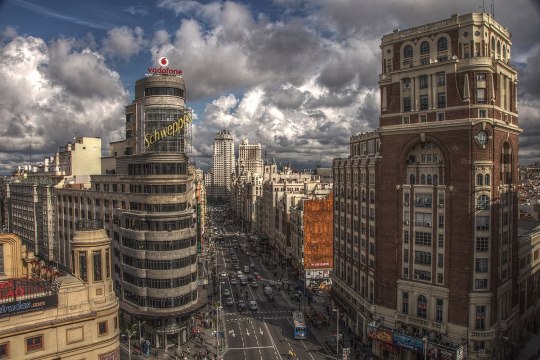

Start your journey in the capital city, Madrid. Explore world-class museums like the Prado, Thyssen-Bornemisza, and Reina Sofia. Wander through the historic neighborhoods of La Latina and Malasaña, and don't miss iconic landmarks like the Royal Palace and Retiro Park.
Barcelona


Barcelona, in Catalonia, is known for its unique architecture, including the famous works of Antoni Gaudí such as Sagrada Família and Park Güell. Stroll along the bustling Las Ramblas, explore the Gothic Quarter, and soak up the sun on the city's beaches.
Andalusia

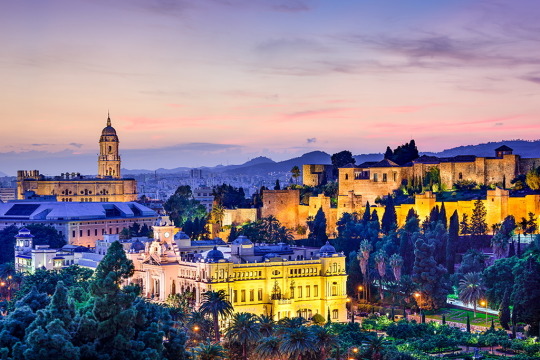
Discover the Moorish influence in cities like Granada, with the stunning Alhambra Palace, and Cordoba, home to the magnificent Mosque-Cathedral. Visit Seville to experience flamenco dancing, the Alcazar palace, and the iconic Plaza de España.
Costa del Sol

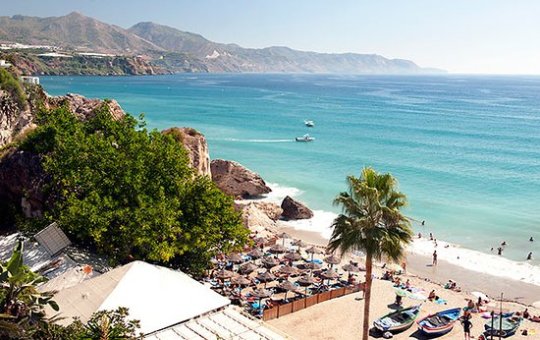
Enjoy the sun and sea on the beautiful beaches of the Costa del Sol, including popular destinations like Marbella, Malaga, and Nerja. Experience vibrant nightlife, delicious seafood, and water sports along the coast.
Basque Country


Explore the unique culture and cuisine of the Basque Country in cities like Bilbao and San Sebastián. Visit the Guggenheim Museum in Bilbao, indulge in pintxos (Basque tapas) in San Sebastián, and admire the rugged coastline.
Camino de Santiago
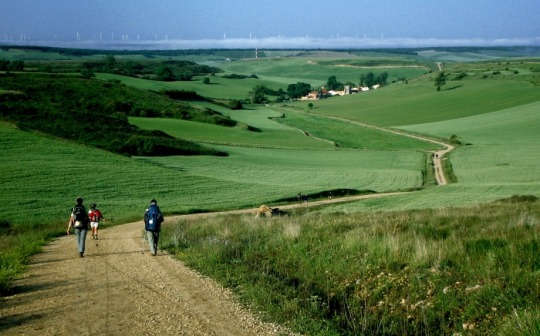

Embark on the pilgrimage route of the Camino de Santiago, which culminates at the historic Santiago de Compostela Cathedral in Galicia. Whether you walk, cycle, or drive, the Camino offers a deeply spiritual and rewarding journey.
Food and Wine
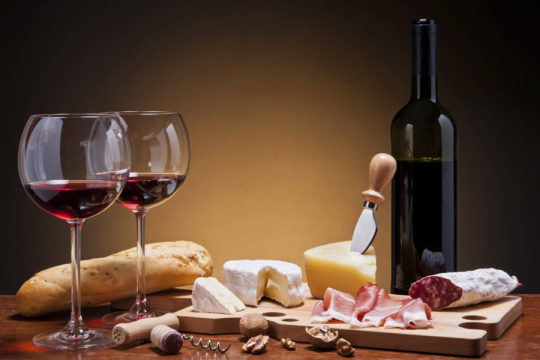

Spain is renowned for its culinary delights. Indulge in paella in Valencia, fresh seafood on the coast, tapas in any city, and hearty stews like cocido madrileño. Pair your meals with local wines, including Rioja, Ribera del Duero, and Cava.
Festivals


Experience the lively festivals and traditions of Spain, such as the Running of the Bulls in Pamplona, the Flamenco Biennial in Seville, or the La Tomatina tomato-throwing festival in Buñol.
Transportation


Spain has an extensive transportation network, including high-speed trains (AVE), buses, and domestic flights. The Eurail Spain Pass is a convenient option for travelers exploring multiple cities by train.
Language and Culture


While Spanish is the official language, many regions have their own languages and dialects, such as Catalan, Basque, and Galician. Embrace the local culture, customs, and traditions during your travels.
0 notes
Text










24/12/2023 - Breakfast
🇪🇸 Casa Dani, Madrid
The store is inside mercado de la paz
🐙 Galician style Octopus (€ 19.90, $29.05)
Tender octopus served with potatoes. Wanted to order grilled octopus but this will have to do.
🥚🥔 Pincho de Tortilla with Coffee (€ 5.40, $7.88)
Deliciously creamy middle with lots of potatoes. Not sure if we got the one with onions or not. A little too salty for my liking but it's still a fantastic piece of tortilla de patata. Decent coffee. It's the perfect cuppa for mornings. Not that strong, but milky enough.
🍽 Confit Artichoke with cured ham (€ 3.70, $5.40)
YUMS. First hit of artichoke. Just can't get enough of these. Not a fan of the ham. Spoiler: they are pretty much the same everywhere.
🍛 Callos, half portion (€ 9, $13.14)
Beef tripe stew that's deliciously thiccc. It feels like a collagen stew. Everything is so tender and so rich.
🐮 Oxtail Traditional, half portion (€ 10.50, $15.33)
Sauce is definitely more exciting than the callos. Alot of soft bits in the tail. It's super good and tastes kind of familiar. Can't believe that this is just half portion. (then again, looking at the price point, it seems about right)
Will definitely swing by again to try other stuff on the menu. While slightly pricey, everything was at the very least satisfactory.
0 notes
Text
The Kingdom of Spain: A Journey Through History and Culture
Introduction to Spain
With an enviable position in southwestern Europe, Spain, or the Kingdom of Spain as it is formally known, holds a historical and cultural richness that few other countries can match. Home to diverse landscapes, an array of traditions, and a host of monumental architectural treasures, it's a land that has continually shaped and been shaped by the ebb and flow of civilizations.
Geographical Overview
The terrain of Spain is as varied as its culture. The Iberian Peninsula's rocky peaks of the Pyrenees and the Costa del Sol's sun-kissed beaches make up its diverse scenery. Each region presents its unique persona, from the verdant plains of Andalusia to the arid meseta of the central plateau.
Additionally, the country encompasses the Mediterranean's Balearic Islands and the Atlantic's Canary Islands. This geographical diversity provides many opportunities for adventure and exploration, truly encapsulating a world within a country.
The Spanish Population
Spain, with a population exceeding 47 million, is a testament to multicultural harmony. It's a place where the modern and the traditional coexist, where multiple languages like Spanish, Catalan, Galician, and Basque resonate, and regional identities are cherished alongside national pride. Known for their zest for life, the Spanish people are famous for their warm hospitality, vibrant festivals, and lifestyle that savors each moment.
The Rich History of Spain
Ancient Times
Stepping back in time, Spain has been the cradle of numerous civilizations. The ancient Phoenicians, Greeks, Carthaginians, and Romans left their imprints here, contributing to a cultural tapestry that grew richer over time. Spain has remnants of these ancient cultures, visible in its diverse architectural and artistic heritage.
The Middle Ages
The Middle Ages marked a significant era in Spain, with the rise of the Islamic Moorish rule in the 8th century, followed by the Christian Reconquista in the 15th century. This period is immortalized in architectural wonders like Alhambras Granada and the Great Mosque Cordoba, proud reminders of Spain's complex and fascinating past.
Modern Spain
Emerging from its historical cocoon, modern Spain is a dynamic, diverse country with its history on the one hand and the promise of the future on another. Today's Spain, a constitutional monarchy, is a leading player on the global stage, with a strong economy and a vibrant culture that draws influence from its illustrious past while constantly looking ahead.

The Spanish Language
Evolution and Influence
The Spanish language, or Castellano, mirrors Spain's rich history. A Romance language with roots in Latin, it carries the echoes of past influences, notably Arabic, resulting from centuries of Moorish rule. The speech goes beyond mere communication - it's the heartbeat of the Spanish people and an embodiment of their identity.
Spanish Cuisine: A Culinary Delight
One can only wander through Spain by succumbing to its culinary charms. The country's cuisine is a gastronomic journey, encompassing the fresh seafood paella of Valencia, the hearty stews of the northern provinces, the mouthwatering tapas that grace every Spanish bar, and the delectable churros, a sweet treat adored nationwide. The cuisine, rooted in local ingredients and regional traditions, adds flavor to Spain's rich cultural tapestry.
Spanish Art and Architecture
From the Romans to the Modernists
Spain's architectural landscape is a chronicle of its history. From the Roman aqueduct of Segovia to the Gothic cathedrals of the north and the Islamic marvels of Andalusia to the modernist wonders of Antoni Gaudí in Barcelona, the country showcases architectural styles spanning centuries.
Spain has made a tremendous artistic contribution to the globe. Pablo Picasso, Salvador Dali, and Francisco Goya were all born in Spain, and their works continue to influence people today.
1 note
·
View note
Text
Exspaining Spain: regions
Galicia (Galicia/Galiza)

Galicia has four provinces, A Coruña, Lugo, Ourense, and Pontevedra. The capital city is Santiago de Compostela.

Architecture
The traditional architecture of the region is characterized by granite or stone walls, wooden structures, and ceramic, stone or straw roofs. A peculiar type of construction is the palloza, an oval or rounded house with a straw roof and a barn.
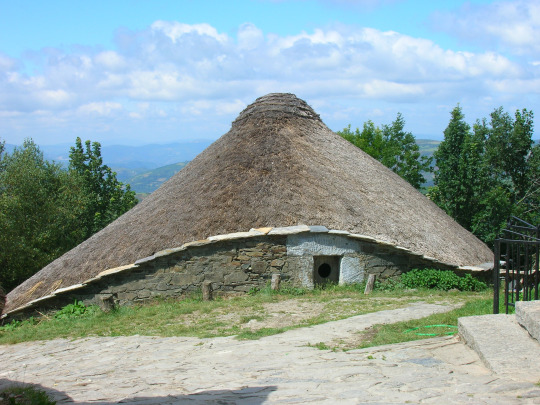
Climate
The predominant climate type is the oceanic one, characterized by cool summers and winters. There is a lot of rainfall all year round. The average temperature throughout the year is 13.3 °C (55.9 ºF).
Economy
Fishing is the most important economic activity, but agriculture, industry, and tourism are also relevant. The secondary sector includes shipbuilding, textiles, granite, and automobiles.
The most touristic regions are Rías Baixas and Santiago de Compostela, which is the destination of the Way of St. James.

Famous people
Adolfo Domínguez - fashion designer
Amancio Ortega - businessman, founder of Inditex
Camilo José Cela - writer, Nobel Prize in Literature
Concepción Arenal - writer
Emilia Pardo Bazán - writer
Francisco Franco - dictator
Luis Tosar - actor
Luz Casal - singer
Mariano Rajoy - former prime minister
Rosalía de Castro - writer
Gastronomy
The Galician diet is based on fish, shellfish, potatoes, meat, cheese, and wines. Typical dishes include polbo á feira (octopus with paprika), caldo galego (stew with vegetables, potatoes, white beans, and fatty pork), empanada galega (a type of empanada with fish, shellfish, or meat), and tarta de Santiago (almond cake).

Polbo á feira

Tarta de Santiago
History
1st millennium BCE - Castro culture
1st century BCE - Roman conquest
5th century CE - Suebi, Britons
6th century - Visigoth invasion
8th century - Muslim invasion
1072 - union with the Kingdom of León
1808 - proclamation of the Kingdom of Galicia
1833 - end of the Kingdom of Galicia
1981 - Statute of Autonomy
Languages
The official languages are Galician and Spanish. Galician Spanish does not use the compound past perfect tense, as a result of the influence of Galician. It is also characterized by the substitution of common-use words for Galician ones, and an abundant use of archaisms and diminutives.
Monuments and landmarks
There are four UNESCO World Heritage Sites: Roman Walls of Lugo (Lugo), Route of Santiago de Compostela (shared with other regions of Spain), Santiago de Compostela (Old Town) (A Coruña), and Tower of Hercules (A Coruña).
Other landmarks include the Ourense Cathedral (Ourense) and the Sanctuary da Virxe Peregrina (Pontevedra).

Santiago de Compostela (Old Town)

Tower of Hercules
69 notes
·
View notes
Video
youtube
COCIDO GALLEGO - Lareiras.gal
0 notes
Text
Drinking is Just Plain Fun
Going to the store to buy your favourite drink can be time-consuming, especially when you have to attend to other important issues. But what if you want to avoid the hassle of going to purchase alcohol each time you need it, and have it delivered to you? There is really no sweat in buying alcoholic drinks online.
As a leading Online Alcohol Delivery Service in USA, we at Sendgifts pride ourselves as we provide our clients with a huge variety of alcoholic drinks for the perfect occasions from small parties and wedding celebrations to corporate. We also deliver an alcohol or a gift of wine to a special person.
Ideally, the online liquor store should be a one-stop-shop’ with everything under one roof.
Zoco Pacharan Navarro Liqueur 1L
Product Details
Zoco Pacharan Navarro Liqueur is produced in the Basque area and is one of the oldest commercial brands of Pacharan and it’s clear to see the flavours have been refined to absolute perfection. Zoco Pacharan definitely delivers a taste to remember.
Made from an Anisette liqueur base, this French specialty is flavoured with beautiful sloe berries, coffee and vanilla. A unique, complex flavoured liqueur with an interesting palate.
Brand: Zoco
Country: Spain
Flavor: Vanilla, Spice, Coffee
Alcohol Content: 25 Percent by Volume
Alcohol type: Liqueurs
Liquid volume: 1L
Appearance: Clear, coppery amber with bronze highlights
Aroma: Stewed prunes, pungent aniseed and cold breakfast tea
Taste: Lightly syrupy and honeyed with sloe berries, ripe cherry, strong liquorice and stewed prunes with anise freshness
Aftertaste: Ripe plums and aniseed with cracked black pepper and hints of chocolate
Pairing: The Pacharán Zoco should be served cool or on ice. It is especially used after meals as digestive.
Terra Meiga Aguardiente De Orujo 750ml
Product Details
The traditional distillate, with a strong personality, intense and aromatic
The Galician pomace brandy Terra Meiga is obtained from the best pomace, which, after complete fermentation, is slowly and carefully distilled.
Its aromas are characteristic of pomace, with sweet tones, and raisined fruit. On the palate it is powerful, with a long aftertaste, and offers retro-olfaction with hints of liquorice.
Type: Aguardiente de Orujo
Made by: Vingalicia
Made in: Spain
Proof: 40% Vol.
Color: Transparent, colorless, bright.
Aroma: intense, very clean and frank.
Taste: Harmonious on the palate, with a silky, fine, elegant attack and great persistence.
0 notes
Text
Everything You Need to Know About Costa Rican Food

A dish from manos en la masa in San José, Costa Rica | Courtesy of Hulu
Abundant farmland, seas, and jungles, plus a stunning mix of cultural influences, have made Costa Rica a Latin American food destination
Costa Rica is one of the few countries on earth where someone can spend an entire week and leave without having any real sense of the local cuisine. The closest many travelers ever get is trying zapote and guanábana at the hotel breakfast bar, secluded inside a resort town, surrounded by expats. What they miss out on is one of Latin America’s most underappreciated cuisines.
This is a country where anything and everything grows. You can walk down the busiest streets in San José and pick pitaya and wild tomatoes right from the sidewalk. Beyond the cattle ranches and coffee plantations, small farmers grow vegetables like chayote, arracacha, and purple corn that are often sold through the country’s vast network of ferías, the weekly regional farmers markets held in every corner of the country. There are minty drinks from mucilaginous, chia-like seeds of a plant called chan, and syrups made from the carob-like pods of a tree called carao. There are addictive bar snacks made from beans and chicharrón, plus seafood from two coasts. Corn is ubiquitous, used to make tortillas, tamales, and cookies.
Costa Rica was one of the first countries to allow American travelers during the COVID-19 pandemic, and restaurants remain open at reduced capacity. While the safety of international travel is still not clear, for future trips, plan to step outside of the expat bubble, away from the multinational hotel chains and toward any small-town restaurant or market — you’ll see the world of Costa Rican cuisine begin to open up. Here, then, is a comprehensive guide to navigating all the ins and outs of eating in Costa Rica.

Courtesy of Hulu
An indigenous woman from the Amburi Koswak tribe plates a traditional Costa Rican spread
Understanding the Influences
“We are a beautiful mix of cultures,” says chef Pablo Bonilla, whose restaurants Sikwa and Francisca reinterpret Indigenous and pre-1950s recipes, respectively. “From Spain came the Catalans, Andalusians, Galicians. Africans came from Guinea, Ghana, and later via Jamaica. Plus, Indigenous descendants of the Mayas in the north and Chibchas in the south.”
Prior to colonization by the Spanish, Costa Rica fell in between the more dominant cultural groups from the north and south, and the country’s present-day Indigenous communities reflect this overlap. In Guanacaste and the Nicoya peninsula, communities of Chorotega, the southernmost descendants of the Maya, still grow and process corn much in the same way they have for thousands of years. Many of their traditional foods, such as tortillas and pancake-like chorreadas, were adapted by the wider population, while the use of porridges and drinks made from maíz pujagua, or purple corn, are more isolated. In the mountainous Talamanca region in the south, communities of Bribri and Boruca people live off the land, safeguarding many ancestral ingredients, while also growing cacao for wider consumption.
Like in the rest of the region, colonization swept across the land like a hurricane, wiping out much of Costa Rica’s native foodways while introducing European livestock and agriculture. The Spanish cut down forests to raise cattle and pigs and planted wheat and rice. Many national recipes, such as olla de carne and countless sweets, are of Spanish origins, having been adapted to involve regional ingredients.
While some Afro-Costa Ricans are descended from enslaved Africans who were forcibly brought to the region during the colonial period, a far greater number are descendants of the English-speaking Jamaican migrants who came in the 19th century and settled on the Caribbean coast. Here, coconut milk is a staple ingredient, used in seafood stews like rondon or to cook rice and beans, as are root vegetables like cassava and yams.
While it hasn’t always been for the best, the United States has also left its mark on Costa Rican cuisine. A surge of Americans have migrated to the country in recent decades, more than 70,000 by some estimates, and many have gone on to open restaurants and start small culinary projects, with mixed success. However, American influence has a much lengthier history tied to monocultures (banana, pineapples, coffee), which have had drastic effects on the country’s food system as well as the environment.

Shutterstock
A classic casado de res served on banana leaf
The Dishes to Know
Gallo pinto (rice and beans)
Claimed by both Costa Rica and Nicaragua, gallo pinto is the regional variation of rice and beans, which is usually seasoned with bell peppers, cilantro, and onions. The name, which translates to “spotted rooster,” refers to the spots of beans that stand out against the white rice, though sometimes it’s just referred to more casually as pinto. For breakfast, it might be served with a fried egg, while for lunch and dinner it’s a side to meat or fish.
There are subtle regional variations. For instance, black beans are the norm, though in Guanacaste, on the Pacific coast closer to Nicaragua, red beans are more typical. The condiment Salsa Lizano, a light brown sauce similar to Worcestershire that’s found on most Costa Rican tables, is stirred into the pot in San José and around the Valle Central. On the Caribbean coast, it might be cooked with coconut milk and chiles.
Chifrijo (fried pork with red beans}
Nearly every cantina in Costa Rica serves this bar snack, which is believed to have been first prepared in the late ’70s at the still-functioning Cordero’s Bar in the town of Tibás outside San José. Its name is the combination of its two signature ingredients: fried pork (chicharrón) and beans (frijoles). It’s sometimes served with a base of rice or toppings like avocados and tomatoes, but the original preparation is eaten more like a bowl of nachos, with tortilla chips and chilera (spicy pickled vegetables) on the side.
Rondón (seafood and coconut stew)
Whatever fish and vegetables a cook has “run down” to by the end of the week get thrown in a pot with coconut milk, herbs, and spices for this typical dish of Costa Rica’s Caribbean coast. The thick stew is found in many parts of the Caribbean and was brought to Central America by Jamaican laborers in the latter half of the 19th century. In Afro-Costa Rican communities like Cahuita or Puerto Limón, rondón might include red snapper, clams, mussels, conch, or sea snails, plus green plantains, cassava, and chiles with a side of coconut rice and breadfruit.
Casado (combo plate)
Translating to “married man,” the casado is Costa Rica’s typical lunch plate. There’s no set recipe, but rather a general mix of simply prepared vegetables with a protein. It might be grilled fish, stewed beef, a pork chop, or fried chicken served with white rice, beans, and coleslaw or some sort of salad of iceberg lettuce and tomatoes. Everyone makes it a little differently, though: They might add fried plantains, slices of avocado, tortillas, or a fried egg, depending on the region and the season.
Olla de carne (beef and vegetable stew)
Olla de carne is eaten every weekend in many Costa Rican homes, often for family gatherings as the long cooking time and amount of vegetables added make it difficult to make in small portions. Beef, usually short ribs and various off cuts, is simmered for four to eight hours with a handful of vegetables that may include yuca, potatoes, chayote, carrots, corn, or plantains. It’s then served with rice and beans on the side, of course.

Getty Images / Sergio Amiti
A bowl of seafood ceviche
Picadillos (vegetable hash)
There’s no truer reflection of Costa Rica’s agricultural bounty than these homey hashes, simple mixes of chopped vegetables sauteed in fat with onions, stock, herbs and other seasonings. The name of the dish always states the primary vegetable being used, such as picadillo de zapallo (squash), vainitas (green beans), chayote, arracache (arracacha), papa (potato), and even fruits like papaya. It’s served over white rice, sometimes with a protein like ground beef or chorizo, or on corn tortillas to make gallos — Costa Rica’s version of the taco — a picadillo becomes a full meal.
Chorreadas (corn pancakes)
These sweet or savory pancakes, made from ground, fresh white or yellow corn, are a staple in Costa Rican kitchens and sodas (small, simple, often family-run establishments) for breakfast. The most typical versions, where the corn is ground by hand, can be traced to pre-Columbian times, though today it’s more likely to be blended in a food processor and thickened with flour and eggs. When sweet (and they are rarely overly sweet), they might be drizzled with honey or syrup. When savory, a dollop of sour cream-like natilla is usually served on top.
Ceviche
Unlike its Peruvian counterpart, Costa Rican ceviche features fish that’s typically marinated in lime juice for at least an hour in the fridge, rather than just seconds, resulting in a more opaque, less raw-tasting fish. It’s usually made with peeled shrimp or firm white fish like sea bass, though sometimes you’ll find chuchecas (blood clams) and a mixture of finely chopped or minced onions, tomatoes, garlic, and cilantro. And many locals swear by a splash of ketchup or tabasco.
Tamales
In the days before Christmas, a favorite pastime is the tamaleada, when families get together to make the star of Christmas dinner: pork tamales. Costa Rican tamales have been adapted from their Indigenous origins to include introduced ingredients like rice, chicken, beef, and carrots. They are never steamed in a corn husk; rather, they are always made in a banana leaf, and when two of them are tied together, as they are often sold, it’s called a piña.
Beef turnovers (patí)
In snack bars and sodas in Caribbean towns like Puerto Limón and Cahuita, the patí is ever-present. Similar to a Jamaican beef patty, but spiced with the local chile panameño, or ají chombo, it is a means of survival for many Afro-Costa Rican women who once sold them on trains and busy streets from wicker baskets, and continue the tradition from Tupperware containers.
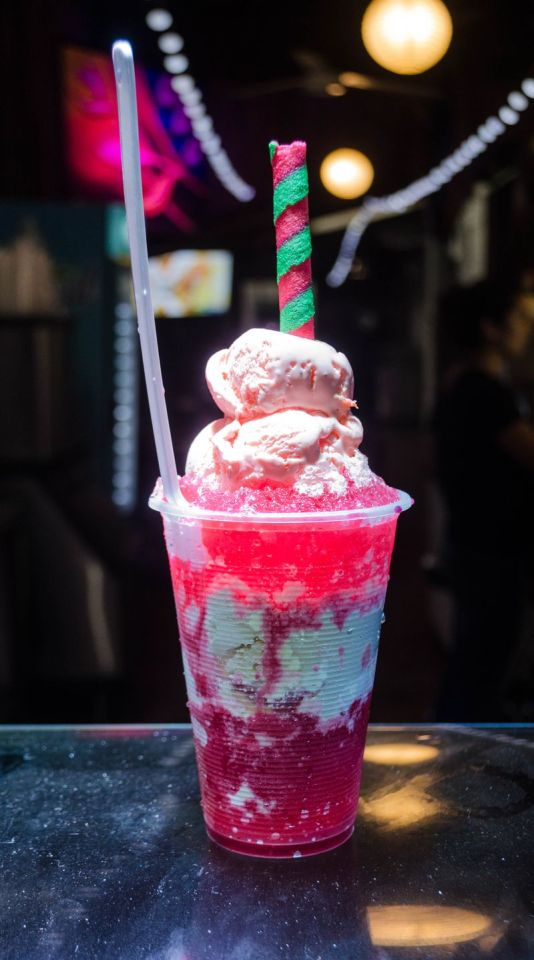
Shutterstock
The Churchill, made with red kola syrup and condensed milk, is Costa Rica’s signature copo.
Peach palm soup (sopa de pejibaye)
Pejibaye, a starchy orange palm fruit, has been widely planted across Costa Rica even prior to colonization. The fruit needs to be boiled for at least an hour to be edible, and then, once peeled and pitted, it can be pureed into a soup with stock, cream, and seasoning.
Shaved ice (copo)
On plazas and beaches throughout Costa Rica, kiosks and roving carts specialize in a local variety of shaved ice called copos or granizados. The cups or cones are topped with everything from milk powder and flavored syrups to fresh fruit and marshmallows. The most emblematic variation is the Churchill, which was named after a man in Puntarenas who looked remarkably like Winston Churchill and always ordered his copo with bright red kola syrup and condensed milk.
Sweetened squash paste (miel de chiverre)
Costa Rica has the typical pan-Latin sweets like flan, tres leches cake, and arroz con leche, but more endemic is this chunky, sweet paste made from chiverre, the fig leaf gourd. This large squash has a sweet, spaghetti-like flesh that gets dried and then cooked with panela, cinnamon, and other spices. The locals’ favorite way to eat it is as the filling of a sweet empanada, though it’s also used to make candy or just eaten with a spoon.
What to Drink
Coffee probably comes to mind when one thinks of drinking in Costa Rica, and there’s a good reason for that. While coffee growing was focused mostly on quantity for more than a century, recent decades have seen a shift toward greater traceability and micro-lots, resulting in more distinct coffees that can be found in new-wave coffee cafes and roasters in San José and the occasional beach town.
In rural and Indigenous parts of the country, you can still find ancient, sweetened drinks like pinolillo and tiste, made from cornmeal or rice and cacao, as well as agua de sapo, a refreshing concoction made from ginger, panela, and lime. There are also chichas, low-proof drinks made from fermented corn or fruits like pejibaye.
In terms of alcohol, the national firewater is the sugarcane-based guaro, which is sometimes mixed with tomato juice, lime juice, and hot sauce for the shot-sized chiliguaro. The general population leans toward mass-market lagers like Imperial and Pilsen, though a growing number of craft breweries around the country, like Treintaycinco, Cervecería Calle Cimarrona, Costa Rica’s Craft Brewing Co., and Domingo 7, are making inroads. Meanwhile, experimental bartenders are breaking new ground by featuring local botanicals and fermented drinks on the drink lists at area hot spots like Bebedero from celebrity bartender Liz Furlong, the clubby Selvática, and hotel bars Celajes and Sentido Norte.

Courtesy of Hulu
Bartender Liz Furlong crafting a drink at Selvática
When to Eat
With foods like rice, beans, and tortillas often eaten at breakfast, lunch, and dinner, meals in Costa Rica can seem repetitive. Breakfast tends to be heavy, with gallo pinto sometimes joined by eggs and fried plantains, while lunch and dinner will swap out the eggs for simple proteins and add a few vegetables. In the afternoon, especially on the weekends, a cup of coffee and a baked good like an empanada or cookie may be added.
During the week, most meals are taken at home, including midday lunch, when many businesses shut down, and might be followed by a siesta. Those on the go might stop by a soda, which are usually open from breakfast until the afternoon, while other restaurants tend to close their kitchens by 10 p.m., if not earlier. For weekend lunches, family gatherings become full-day affairs with tamales and slow-cooked stews like olla de carne, while rural and beach restaurants are at their busiest.
Where to Eat
While gringo-run restaurants with standard international menus full of imported ingredients rule many resort towns, they aren’t where most Ticos opt to eat. Fresh, seasonal produce and locally raised and caught meats and seafood can often be found along the side of the highway. Outside of formal restaurants, there are some other spots for a good meal:
Sodas
Outside of someone’s home, sodas are the place to eat traditional Costa Rican food. These unpretentious, independent restaurants range from simple lunch counters in urban markets to sprawling, family-run restaurants in the countryside. The menus will have a mix of regional favorites, plus low-cost set meals like casados.
Marisquerías
Marisquerías are similar to sodas, but they specialize in seafood. They are mostly found along the coasts, though not necessarily right on the beach. They’ll offer simple dishes like camarónes al ajillo (garlic shrimp), arroz con mariscos (rice with mixed seafood), grilled or fried fish, soups, and ceviches.
Ferias del agricultor
On Fridays, Saturdays, or Sundays, every region of Costa Rica holds its weekly feria, a farmer’s market positioned around seasonal fruits and vegetables. There’s often live music and vendors selling ready-to-eat foods like pipas (young coconuts), sliced fruits, gallos, and empanadas.
Roadside fruit stands
On highways and country roads throughout Costa Rica, open-air fruit stands are an easy pit stop. Aside from the mangoes and bananas, keep an eye out for lesser-known fruits like manzana de agua (water apples), guanábana (soursop), carambola (star fruit), mamón Chino (rambutan), mamey, and marañon (cashew fruit).

Courtesy of Hulu
Pablo Bonilla of Sikwa
What’s Next
The restaurant revolution that swept up much of South America and eventually Central American neighbors like Panama and Guatemala arrived late to Costa Rica but is now in full swing, at least around the capital.
After years working in France, chef José González returned home and opened Al Mercat in 2014, and he began exploring the country’s biodiversity through foraged and fermented ingredients. During the pandemic, he moved the restaurant from its original Barrio Escalante to his parent’s ranch on the outskirts of San José. At Sikwa, Pablo Bonilla has been working with Indigenous communities like the Boruca and Bribrí to resurrect ancestral dishes, while Silvestre, set in a beautifully restored 1930s Barrio Amón house, is serving contemporary Costa Rican food through its elaborate tasting menus.
Former Jamie Oliver right-hand man Sebastián La Rocca, who was born in Argentina, has built a mini empire in Escazu with his wood-fired Costa Rican cooking at Botaniko, speakeasy izakaya Rōkka, and ghost kitchens slinging gourmet burgers and choripan. Additionally, at Descarada Tradición, Sofía Campos and Luis Chaves are reviving the tradition of the gallo with housemade tortillas, while at MadFish, Tere Moreno is helping raise the profile of the artisan fishing community of Puntarenas.
This renewed culinary scene is still in its early days, though it’s gradually spreading toward the jungles and beaches, where pop-ups, surf cafes, and creative street-food vendors are showing signs they’re more interested in working with the country’s natural bounty than trying to appeal to the unsustainable demands of tourists.
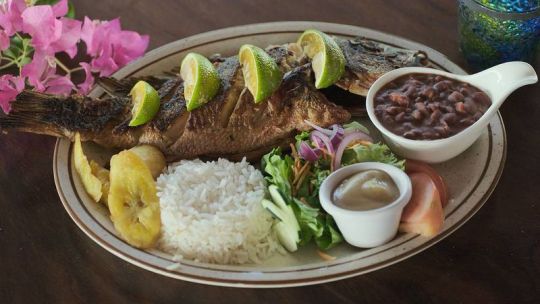
Courtesy of Hulu
A whole fish with plantains, rice, and beans
Writer and photographer Nicholas Gill is the co-founder of New Worlder.

from Eater - All https://ift.tt/3kugYnD https://ift.tt/2It7ifs

A dish from manos en la masa in San José, Costa Rica | Courtesy of Hulu
Abundant farmland, seas, and jungles, plus a stunning mix of cultural influences, have made Costa Rica a Latin American food destination
Costa Rica is one of the few countries on earth where someone can spend an entire week and leave without having any real sense of the local cuisine. The closest many travelers ever get is trying zapote and guanábana at the hotel breakfast bar, secluded inside a resort town, surrounded by expats. What they miss out on is one of Latin America’s most underappreciated cuisines.
This is a country where anything and everything grows. You can walk down the busiest streets in San José and pick pitaya and wild tomatoes right from the sidewalk. Beyond the cattle ranches and coffee plantations, small farmers grow vegetables like chayote, arracacha, and purple corn that are often sold through the country’s vast network of ferías, the weekly regional farmers markets held in every corner of the country. There are minty drinks from mucilaginous, chia-like seeds of a plant called chan, and syrups made from the carob-like pods of a tree called carao. There are addictive bar snacks made from beans and chicharrón, plus seafood from two coasts. Corn is ubiquitous, used to make tortillas, tamales, and cookies.
Costa Rica was one of the first countries to allow American travelers during the COVID-19 pandemic, and restaurants remain open at reduced capacity. While the safety of international travel is still not clear, for future trips, plan to step outside of the expat bubble, away from the multinational hotel chains and toward any small-town restaurant or market — you’ll see the world of Costa Rican cuisine begin to open up. Here, then, is a comprehensive guide to navigating all the ins and outs of eating in Costa Rica.

Courtesy of Hulu
An indigenous woman from the Amburi Koswak tribe plates a traditional Costa Rican spread
Understanding the Influences
“We are a beautiful mix of cultures,” says chef Pablo Bonilla, whose restaurants Sikwa and Francisca reinterpret Indigenous and pre-1950s recipes, respectively. “From Spain came the Catalans, Andalusians, Galicians. Africans came from Guinea, Ghana, and later via Jamaica. Plus, Indigenous descendants of the Mayas in the north and Chibchas in the south.”
Prior to colonization by the Spanish, Costa Rica fell in between the more dominant cultural groups from the north and south, and the country’s present-day Indigenous communities reflect this overlap. In Guanacaste and the Nicoya peninsula, communities of Chorotega, the southernmost descendants of the Maya, still grow and process corn much in the same way they have for thousands of years. Many of their traditional foods, such as tortillas and pancake-like chorreadas, were adapted by the wider population, while the use of porridges and drinks made from maíz pujagua, or purple corn, are more isolated. In the mountainous Talamanca region in the south, communities of Bribri and Boruca people live off the land, safeguarding many ancestral ingredients, while also growing cacao for wider consumption.
Like in the rest of the region, colonization swept across the land like a hurricane, wiping out much of Costa Rica’s native foodways while introducing European livestock and agriculture. The Spanish cut down forests to raise cattle and pigs and planted wheat and rice. Many national recipes, such as olla de carne and countless sweets, are of Spanish origins, having been adapted to involve regional ingredients.
While some Afro-Costa Ricans are descended from enslaved Africans who were forcibly brought to the region during the colonial period, a far greater number are descendants of the English-speaking Jamaican migrants who came in the 19th century and settled on the Caribbean coast. Here, coconut milk is a staple ingredient, used in seafood stews like rondon or to cook rice and beans, as are root vegetables like cassava and yams.
While it hasn’t always been for the best, the United States has also left its mark on Costa Rican cuisine. A surge of Americans have migrated to the country in recent decades, more than 70,000 by some estimates, and many have gone on to open restaurants and start small culinary projects, with mixed success. However, American influence has a much lengthier history tied to monocultures (banana, pineapples, coffee), which have had drastic effects on the country’s food system as well as the environment.

Shutterstock
A classic casado de res served on banana leaf
The Dishes to Know
Gallo pinto (rice and beans)
Claimed by both Costa Rica and Nicaragua, gallo pinto is the regional variation of rice and beans, which is usually seasoned with bell peppers, cilantro, and onions. The name, which translates to “spotted rooster,” refers to the spots of beans that stand out against the white rice, though sometimes it’s just referred to more casually as pinto. For breakfast, it might be served with a fried egg, while for lunch and dinner it’s a side to meat or fish.
There are subtle regional variations. For instance, black beans are the norm, though in Guanacaste, on the Pacific coast closer to Nicaragua, red beans are more typical. The condiment Salsa Lizano, a light brown sauce similar to Worcestershire that’s found on most Costa Rican tables, is stirred into the pot in San José and around the Valle Central. On the Caribbean coast, it might be cooked with coconut milk and chiles.
Chifrijo (fried pork with red beans}
Nearly every cantina in Costa Rica serves this bar snack, which is believed to have been first prepared in the late ’70s at the still-functioning Cordero’s Bar in the town of Tibás outside San José. Its name is the combination of its two signature ingredients: fried pork (chicharrón) and beans (frijoles). It’s sometimes served with a base of rice or toppings like avocados and tomatoes, but the original preparation is eaten more like a bowl of nachos, with tortilla chips and chilera (spicy pickled vegetables) on the side.
Rondón (seafood and coconut stew)
Whatever fish and vegetables a cook has “run down” to by the end of the week get thrown in a pot with coconut milk, herbs, and spices for this typical dish of Costa Rica’s Caribbean coast. The thick stew is found in many parts of the Caribbean and was brought to Central America by Jamaican laborers in the latter half of the 19th century. In Afro-Costa Rican communities like Cahuita or Puerto Limón, rondón might include red snapper, clams, mussels, conch, or sea snails, plus green plantains, cassava, and chiles with a side of coconut rice and breadfruit.
Casado (combo plate)
Translating to “married man,” the casado is Costa Rica’s typical lunch plate. There’s no set recipe, but rather a general mix of simply prepared vegetables with a protein. It might be grilled fish, stewed beef, a pork chop, or fried chicken served with white rice, beans, and coleslaw or some sort of salad of iceberg lettuce and tomatoes. Everyone makes it a little differently, though: They might add fried plantains, slices of avocado, tortillas, or a fried egg, depending on the region and the season.
Olla de carne (beef and vegetable stew)
Olla de carne is eaten every weekend in many Costa Rican homes, often for family gatherings as the long cooking time and amount of vegetables added make it difficult to make in small portions. Beef, usually short ribs and various off cuts, is simmered for four to eight hours with a handful of vegetables that may include yuca, potatoes, chayote, carrots, corn, or plantains. It’s then served with rice and beans on the side, of course.

Getty Images / Sergio Amiti
A bowl of seafood ceviche
Picadillos (vegetable hash)
There’s no truer reflection of Costa Rica’s agricultural bounty than these homey hashes, simple mixes of chopped vegetables sauteed in fat with onions, stock, herbs and other seasonings. The name of the dish always states the primary vegetable being used, such as picadillo de zapallo (squash), vainitas (green beans), chayote, arracache (arracacha), papa (potato), and even fruits like papaya. It’s served over white rice, sometimes with a protein like ground beef or chorizo, or on corn tortillas to make gallos — Costa Rica’s version of the taco — a picadillo becomes a full meal.
Chorreadas (corn pancakes)
These sweet or savory pancakes, made from ground, fresh white or yellow corn, are a staple in Costa Rican kitchens and sodas (small, simple, often family-run establishments) for breakfast. The most typical versions, where the corn is ground by hand, can be traced to pre-Columbian times, though today it’s more likely to be blended in a food processor and thickened with flour and eggs. When sweet (and they are rarely overly sweet), they might be drizzled with honey or syrup. When savory, a dollop of sour cream-like natilla is usually served on top.
Ceviche
Unlike its Peruvian counterpart, Costa Rican ceviche features fish that’s typically marinated in lime juice for at least an hour in the fridge, rather than just seconds, resulting in a more opaque, less raw-tasting fish. It’s usually made with peeled shrimp or firm white fish like sea bass, though sometimes you’ll find chuchecas (blood clams) and a mixture of finely chopped or minced onions, tomatoes, garlic, and cilantro. And many locals swear by a splash of ketchup or tabasco.
Tamales
In the days before Christmas, a favorite pastime is the tamaleada, when families get together to make the star of Christmas dinner: pork tamales. Costa Rican tamales have been adapted from their Indigenous origins to include introduced ingredients like rice, chicken, beef, and carrots. They are never steamed in a corn husk; rather, they are always made in a banana leaf, and when two of them are tied together, as they are often sold, it’s called a piña.
Beef turnovers (patí)
In snack bars and sodas in Caribbean towns like Puerto Limón and Cahuita, the patí is ever-present. Similar to a Jamaican beef patty, but spiced with the local chile panameño, or ají chombo, it is a means of survival for many Afro-Costa Rican women who once sold them on trains and busy streets from wicker baskets, and continue the tradition from Tupperware containers.

Shutterstock
The Churchill, made with red kola syrup and condensed milk, is Costa Rica’s signature copo.
Peach palm soup (sopa de pejibaye)
Pejibaye, a starchy orange palm fruit, has been widely planted across Costa Rica even prior to colonization. The fruit needs to be boiled for at least an hour to be edible, and then, once peeled and pitted, it can be pureed into a soup with stock, cream, and seasoning.
Shaved ice (copo)
On plazas and beaches throughout Costa Rica, kiosks and roving carts specialize in a local variety of shaved ice called copos or granizados. The cups or cones are topped with everything from milk powder and flavored syrups to fresh fruit and marshmallows. The most emblematic variation is the Churchill, which was named after a man in Puntarenas who looked remarkably like Winston Churchill and always ordered his copo with bright red kola syrup and condensed milk.
Sweetened squash paste (miel de chiverre)
Costa Rica has the typical pan-Latin sweets like flan, tres leches cake, and arroz con leche, but more endemic is this chunky, sweet paste made from chiverre, the fig leaf gourd. This large squash has a sweet, spaghetti-like flesh that gets dried and then cooked with panela, cinnamon, and other spices. The locals’ favorite way to eat it is as the filling of a sweet empanada, though it’s also used to make candy or just eaten with a spoon.
What to Drink
Coffee probably comes to mind when one thinks of drinking in Costa Rica, and there’s a good reason for that. While coffee growing was focused mostly on quantity for more than a century, recent decades have seen a shift toward greater traceability and micro-lots, resulting in more distinct coffees that can be found in new-wave coffee cafes and roasters in San José and the occasional beach town.
In rural and Indigenous parts of the country, you can still find ancient, sweetened drinks like pinolillo and tiste, made from cornmeal or rice and cacao, as well as agua de sapo, a refreshing concoction made from ginger, panela, and lime. There are also chichas, low-proof drinks made from fermented corn or fruits like pejibaye.
In terms of alcohol, the national firewater is the sugarcane-based guaro, which is sometimes mixed with tomato juice, lime juice, and hot sauce for the shot-sized chiliguaro. The general population leans toward mass-market lagers like Imperial and Pilsen, though a growing number of craft breweries around the country, like Treintaycinco, Cervecería Calle Cimarrona, Costa Rica’s Craft Brewing Co., and Domingo 7, are making inroads. Meanwhile, experimental bartenders are breaking new ground by featuring local botanicals and fermented drinks on the drink lists at area hot spots like Bebedero from celebrity bartender Liz Furlong, the clubby Selvática, and hotel bars Celajes and Sentido Norte.

Courtesy of Hulu
Bartender Liz Furlong crafting a drink at Selvática
When to Eat
With foods like rice, beans, and tortillas often eaten at breakfast, lunch, and dinner, meals in Costa Rica can seem repetitive. Breakfast tends to be heavy, with gallo pinto sometimes joined by eggs and fried plantains, while lunch and dinner will swap out the eggs for simple proteins and add a few vegetables. In the afternoon, especially on the weekends, a cup of coffee and a baked good like an empanada or cookie may be added.
During the week, most meals are taken at home, including midday lunch, when many businesses shut down, and might be followed by a siesta. Those on the go might stop by a soda, which are usually open from breakfast until the afternoon, while other restaurants tend to close their kitchens by 10 p.m., if not earlier. For weekend lunches, family gatherings become full-day affairs with tamales and slow-cooked stews like olla de carne, while rural and beach restaurants are at their busiest.
Where to Eat
While gringo-run restaurants with standard international menus full of imported ingredients rule many resort towns, they aren’t where most Ticos opt to eat. Fresh, seasonal produce and locally raised and caught meats and seafood can often be found along the side of the highway. Outside of formal restaurants, there are some other spots for a good meal:
Sodas
Outside of someone’s home, sodas are the place to eat traditional Costa Rican food. These unpretentious, independent restaurants range from simple lunch counters in urban markets to sprawling, family-run restaurants in the countryside. The menus will have a mix of regional favorites, plus low-cost set meals like casados.
Marisquerías
Marisquerías are similar to sodas, but they specialize in seafood. They are mostly found along the coasts, though not necessarily right on the beach. They’ll offer simple dishes like camarónes al ajillo (garlic shrimp), arroz con mariscos (rice with mixed seafood), grilled or fried fish, soups, and ceviches.
Ferias del agricultor
On Fridays, Saturdays, or Sundays, every region of Costa Rica holds its weekly feria, a farmer’s market positioned around seasonal fruits and vegetables. There’s often live music and vendors selling ready-to-eat foods like pipas (young coconuts), sliced fruits, gallos, and empanadas.
Roadside fruit stands
On highways and country roads throughout Costa Rica, open-air fruit stands are an easy pit stop. Aside from the mangoes and bananas, keep an eye out for lesser-known fruits like manzana de agua (water apples), guanábana (soursop), carambola (star fruit), mamón Chino (rambutan), mamey, and marañon (cashew fruit).

Courtesy of Hulu
Pablo Bonilla of Sikwa
What’s Next
The restaurant revolution that swept up much of South America and eventually Central American neighbors like Panama and Guatemala arrived late to Costa Rica but is now in full swing, at least around the capital.
After years working in France, chef José González returned home and opened Al Mercat in 2014, and he began exploring the country’s biodiversity through foraged and fermented ingredients. During the pandemic, he moved the restaurant from its original Barrio Escalante to his parent’s ranch on the outskirts of San José. At Sikwa, Pablo Bonilla has been working with Indigenous communities like the Boruca and Bribrí to resurrect ancestral dishes, while Silvestre, set in a beautifully restored 1930s Barrio Amón house, is serving contemporary Costa Rican food through its elaborate tasting menus.
Former Jamie Oliver right-hand man Sebastián La Rocca, who was born in Argentina, has built a mini empire in Escazu with his wood-fired Costa Rican cooking at Botaniko, speakeasy izakaya Rōkka, and ghost kitchens slinging gourmet burgers and choripan. Additionally, at Descarada Tradición, Sofía Campos and Luis Chaves are reviving the tradition of the gallo with housemade tortillas, while at MadFish, Tere Moreno is helping raise the profile of the artisan fishing community of Puntarenas.
This renewed culinary scene is still in its early days, though it’s gradually spreading toward the jungles and beaches, where pop-ups, surf cafes, and creative street-food vendors are showing signs they’re more interested in working with the country’s natural bounty than trying to appeal to the unsustainable demands of tourists.

Courtesy of Hulu
A whole fish with plantains, rice, and beans
Writer and photographer Nicholas Gill is the co-founder of New Worlder.

from Eater - All https://ift.tt/3kugYnD via Blogger https://ift.tt/38yBVv9
0 notes
Photo

Growing up after performing in the city,my family would go to a restaurant called little Spain in Newark, NJ. A lot of great memories there. I would always get Caldo de Gallego. In English it is called Galician Stew. Chickpeas or white beans, cabbage or kale, ham potatoes and chorizo is how I make it. Takes me back to family and gives me faith in Christ almighty. God know what he does. Keep him at the center of it all: #godsplan #family #thistooshallpass “Put on the full armor of God, so that you can take your stand against the devil’s schemes.” Ephesians 6:11 NIV https://www.bible.com/111/eph.6.11.niv (at Woodstock, Georgia) https://www.instagram.com/p/B-H_9QQpl4DkVtbRmvVGXm3M2fnxeBT6RyNTHs0/?igshid=62mn4tbymx4s
0 notes
Photo

🎇 Happy New Year 🍾 . As we rang out 2019 back home, we were able to snag last minute reservations to Telèferic Barcelona, one of the newest restaurants in the Bay Area . Thankful for all the hospitality, friendships, and wonderful food we’ve been able to enjoy this past year and looking forward to a healthy and prosperous 2020! . Thank you TELÈFERIC BARCELONA for a great atmosphere and friendly service paired with authentic Spanish tapas to end the year! . 📷 40 month Iberian Bellota Ham | Spanish Cheese Board | Iberian Steamboat Oyster with Iberian Ham | King Crab Croquetas with Ahi Tuna Sashimi and Caviar | Galician Octopus with Mashed Potatoes and Truffle Oil | Beef Carpacio with Fresh Arugula and Shaved Manchego | Catalan Steak with Demiglace and Iberian Jamon | Basque Salmon Stew with Clam and Shrimp | Churros, Torrijo, and Choco Magic | New Year’s Eve Champagne Pour . 📍Telèferic Barcelona, Palo Alto, CA . #instafood #foodstagram #yelppeninsula #yelpsouthbay #eatersf #spanishfood #seafood #jamon #crab #steak #bestfoodfeed #bestfoodbayarea #topcitybites #paloaltoeats #sffoodie #foodie #nomnom #feedfeed #eeeeeats #foodpics #eeeeeats #foodgasm #dailyfoodfeed #foodlover #foodphotography (at Telefèric Barcelona) https://www.instagram.com/p/B6yf8QdlkPK/?igshid=1jcakoy5hkgjy
#instafood#foodstagram#yelppeninsula#yelpsouthbay#eatersf#spanishfood#seafood#jamon#crab#steak#bestfoodfeed#bestfoodbayarea#topcitybites#paloaltoeats#sffoodie#foodie#nomnom#feedfeed#eeeeeats#foodpics#foodgasm#dailyfoodfeed#foodlover#foodphotography
0 notes
Link
"Graphic violence and sexual harassment". Instagram censorship image of Galician stew https://www.liveuniverse.club/graphic-violence-and-sexual-harassment-instagram-censorship-image-of-galician-stew/
0 notes
Link
"Graphic violence and sexual harassment". Instagram censorship image of Galician stew https://www.liveuniverse.club/graphic-violence-and-sexual-harassment-instagram-censorship-image-of-galician-stew/
0 notes
Text
Exspaining Spain: regions
Asturias (Asturias/Asturies)

The Principality of Asturias only has one province, Asturias. The capital city is Oviedo.

Architecture
Asturian traditional architecture is Romanesque, which characterized by round-headed arches, barrel vaults, apses, and acanthus-leaf decoration.

Climate
The predominant climate type is the oceanic one, characterized by cool summers and winters. There is abundant rainfall all year round. The average temperature throughout the year is 13.5 °C (56.3 ºF).
Economy
Agriculture, fishing, and milk production used to be the backbone of Asturian economy. Nowadays, the main industries are coal mining and steel production.

Famous people
Fernando Alonso - Formula One racing driver
Gaspar Melchor de Jovellanos - philosopher
Leopoldo Alas “Clarín” - writer
Luis Enrique Martínez García - soccer player and manager
Margarita Salas - scientist
Melendi - singer
Pedro Rodríguez de Campomanes - statesman
Queen Letizia of Spain - former journalist and current queen consort
Samuel Sánchez - cyclist
Severo Ochoa - Nobel Prize in Physiology
Torcuato Fernández-Miranda - key lawmaker during the transition to democracy
Gastronomy
The Asturian diet is based on seafood, fish, beef, legumes, stews, cereals, cheese, and apple cider. Typical dishes include fabada asturiana (stew with white beans, pork shoulder, blood sausage, and chorizo), cachopo (veal fillets with ham and cheese), fabes con almejas (white beans with clams), frixuelos (a kind of crêpe), and rice pudding.

Fabada asturiana

Cachopo
History
11th century BCE - Astures (local Celtic people)
29-19 BCE - Roman conquest
722 - independent kingdom that initiated the Reconquest
10th century - the Kingdom of Asturias gave way to the Kingdom of León
14th century - Principality of Asturias
1934 - Revolution of Asturias
1939-1975 - Asturias came to be known as Province of Oviedo
1981 - Statute of Autonomy
Languages
Spanish is the only official language, but Asturian is recognized as a minority language. Asturian substratum may be related to Celtic and Lusitanian. It has borrowed many words from Spanish, French, Occitan, and Galician.
Monuments and landmarks
There are three UNESCO World Heritage Sites: Cave of Altamira and Paleolithic Cave Art of Northern Spain (shared with other regions of Spain), Monuments of Oviedo and the Kingdom of the Asturias, and Routes of Santiago de Compostela: Camino Francés and Routes of Northern Spain (shared with France and other regions of Spain).
Other landmarks include the church of St. Mary at Mount Naranco, the church of St. Michael of Lillo, the Holy Cave of Covadonga, and the Picos de Europa National Park.

St. Michael of Lillo

Picos de Europa National Park
27 notes
·
View notes
Text




SUSHI WITH OLIVE OIL?
Ever since Ferran Adriá introduced foams and “molecular cuisine,” Spain has been a hotbed of haute cuisine. A restaurant highlighting new Spanish cooking was right in our A Coruña neighborhood, as it turned out and we had a wonderful meal there. Raw fish in olive oil and local greens, Spanish mackerel “sashimi” and dumplings with seafood stew topped with a tasty foam. I had local sidra (musty hard cider, Galician style) to top it all off.
0 notes
Text
Our Favourite Menu (+ Signature Dish)
Our menu consists of an appetizer, soup, main dish, dessert and afterwards you can choose one of the many delicious Colombian coffee flavors.
Appetizer
For appetizer we decided to go with Arepas. An arepa is a roll baked from a cooked cornmeal dough. Arepas originate from Latin America and are very popular in Colombia. The rolls are eaten with almost all meals, they can be eaten as a main dish or as a starter. They are filled with cheese, spicy meat filling (carne mechada), fish, avocado or other vegetables.
Arepas are practically a national Colombian symbol. You can find arepa vendors on almost every street corner and you can also find them in almost any local neighbourhood market, grocery store or restaurant in Colombia.

Soup
For the soup we went with a Colombian chicken soup called Ajiaco.Ajiaco is a very popular dish in Bogota – Colombia’s capital city.
This is a hearty soup, verging on stew. The broth is rich and creamy but without any cream! It’s made from chicken stock, pureed corn and grated potatoes.
Once the soup has cooked down to a wonderfully thick consistency, more corn and potatoes are added, along with shredded chicken, carrots, cilantro, and lime juice. The final tasty layer is a garnish of cubed avocado and salty capers.

Main dish + signature dish
Our main dish is at the same time also our signature dish. We decided to serve empanadas.
An empanada is filled dough that is baked or deep-fried. The name comes from the Spanish, Portuguese and Galician verb empanar, which means packing or wrapping.
These unique and tasty empanadas have an outer crust made with masarepa, the precooked cornmeal that is used to make arepas. The filling is stewed beef (or pork) and potatoes seasoned with hogao.
Frying these empanadas gives them a crispy exterior, but the cornmeal pastry is deliciously creamy and soft on the inside. It's traditional to serve these empanadas with spicy aji sauce, but you can also choose other sauces.
In Colombia, empanadas are also sold outside of the churches. They are usually small and just have potato filling, a great alternative for vegetarians and absolutely delicious.

Dessert
After the empanadas we wanted to serve a sweet dessert, which is not too heavy on the stomach so we went with obleas con arequipe.
Obleas con arequipe are huge, circular wafers that are spread with an assortment of flavors, including arequipe (Colombia’s famed caramel sauce) jam and cheese. you can also put two obleas together to create a sandwich effect, with the filling inside.
Dulce de leche (in Colombia known as arequipe) is a caramel paste known throughout Latin America.
Dulce de leche consists of milk, sugar and baking powder (sometimes with the addition of vanilla), which is cooked slowly and long.

Coffee
After the dessert you can order coffee at the bar. Colombia has a lot of coffee flavours. Colombian coffee is famous for its consistently fine, mild flavor.
Colombian coffees are well balanced, medium bodied, and bright. They are also the most highly marketed coffees in the world. Everyone knows Juan Valdez. The Coffee Federation of Colombia has done an excellent job of connoting in the American public's mind that Colombians are the "richest coffees in the world."

0 notes